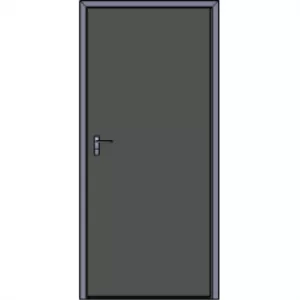Bulletproof Door – Professional Description
A Bulletproof Door—also known as an Armored Security Door, Ballistic Resistant Door, or Security Armored Door—is a high-security barrier designed to resist direct firearm attacks while maintaining structural integrity. Unlike standard fire-rated or anti-theft doors, these doors are engineered to stop handgun rounds, high-powered rifles, and even armor-piercing ammunition under controlled testing conditions.
Certified by international standards such as EN 1522/1523 (FB1–FB7), UL 752 (Levels 1–10), and NIJ (Levels II–IV), bulletproof doors are tested in accredited laboratories to ensure consistent ballistic resistance. For example, UL 752 Level 3 is tested against .44 Magnum rounds, EN FB6 resists 7.62×51 mm NATO rifles, and EN FB7 provides protection against armor-piercing ammunition.
The technical structure typically includes 5–12 mm ballistic steel plates, multi-layer composite armor cores, and 24–60 mm laminated ballistic glass panels. This configuration ensures that both the opaque leaf and the vision panel achieve the same protection level, eliminating weak points in the assembly.
Applications for bulletproof doors extend to banks, cash-handling centers, embassies, government offices, luxury residences, industrial plants, and data centers. In all cases, certified documentation is critical: contractors and buyers expect full ballistic test reports, compliance certificates, and traceability labels before project acceptance.
By offering certified bulletproof doors with proven data and compliance, suppliers like YK Door Industry provide clients with solutions that combine tested ballistic resistance, functional design, and international certification credibility.
Armored door


